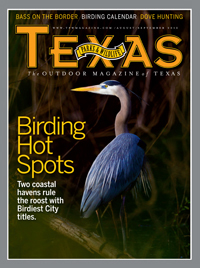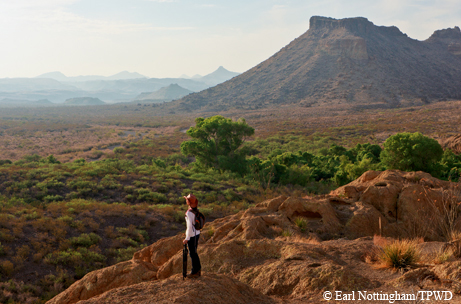
Picture This: The Art of Seeing
To develop greater visual awareness, open your imagination to nuances of light, color and texture.
By Earl Nottingham
Photographers often hear the phrase “You’ve got a great eye.” In reality, a “great eye” is nothing more than a learned sense of visual awareness that enables you to quickly recognize a subject or situation that lends itself to the creation of an exciting photograph. While this ability to “see” may come naturally to many photographers, some of us acquire an eye only through years of trial and error and by studying the work of other artists and photographers.
Learning to see in photographic terms actually involves relearning the way we normally look at and react to things around us, much like a child seeing things for the first time.
Unfortunately, we often have preconceived ideas of what a photograph should look like. That’s why we often shoot snapshots in predictable and repetitive ways. However, by opening up our imagination and exploring new possibilities, we can become more perceptive of and receptive to detailed nuances of light, form, composition, texture and color — allowing those nuances to dictate the instant we press the shutter, regardless of subject matter.

Small changes in lighting, composition and angle can make all the difference in a good photo.
Thankfully, we have the camera not only as a tool but also as a gentle guide to help us relearn the way we see. By its nature, the camera requires us to slow down and assess and appreciate the scene before us. It gives us a license (or excuse) to pause and reflect on the overlooked details of our surroundings. The photographer Dorothea Lange once said paradoxically, “The camera is an instrument that teaches people how to see without a camera.”
It is important to remember, however, that the camera is only the catalyst — a means to an end. There is often too much emphasis on buying the latest and greatest cameras and lenses without considering the artistic aspects that go into the making of a good photograph.
There are many ways to help develop the eye, and, like any instrument, the more you practice the easier it becomes. Here are a few suggestions:
First, spend as much time as possible studying the work of other photographers by looking through magazines and books or by visiting galleries. Look for common denominators in their work, such as lighting and composition, and apply some of those elements to your particular style.
Next, take your camera with you everywhere and challenge yourself to shoot something every day. You will be amazed how many opportunities come up for interesting photos. Inexpensive point-and-shoot cameras and phone cameras are easy to carry and ideal for spontaneous photography. What is important is to just get out and shoot — lots! Don’t worry about the many bad images you will get before you finally get that one great one. That’s what the “delete” button is for.
Finally, give yourself mini-assignments to train your eye to see in different ways. Here are just a few ideas:
• Shoot objects that say “texture.”
• Use only one focal length setting for a day.
• See how many different photos you can shoot by standing in one spot (think wide, telephoto and macro).
• Shoot something from ground level — a worm’s-eye view.
• Look for naturally occurring frames when composing images.
• Take pictures of people interacting.
• See if you can find pictures within pictures.
The truth is, we never stop learning to see — it’s always a continuing education. However, once you have discovered how to see things in different ways, you will find that there is a whole new world to photograph and enjoy.
Please send questions and comments to Earl at earl.nottingham@tpwd.state.tx.us.
Related stories
Picture This: The Rule of Thirds
Picture This: Sensors and Sensitivity
Picture This: There's an App for That
Picture This: Photo Contest Winners
Picture This: Keeping Your Camera Steady
Picture This: Retiree's Photo Sessions Reflect the Nature of the Day
Picture This: Getting Colors Right With White Balance
For more on TP&W magazine photography, go to our Photography page

